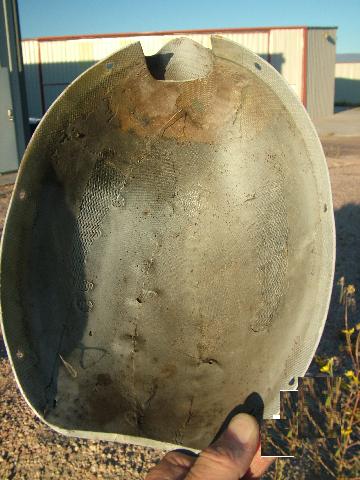Hey guys,
I really don't have a hat in the ring since I'm building a bearhawk (I live in Alaska so most of my operations will be on grass or worse), but I did want to make a few comments from an engineering perspective as that part of this problem is interesting to me.
First, I didn't know much about the RV-6A nose wheel since I never considered a nose dragger, but after looking at the video (
http://www.youtube.com/watch?v=YYCerJM_Qww) I must conclude that the nosewheel was a complete after-thought that feels like an engineering hack.
If you look at how much that thing moves around even on a relatively smooth surface then it's easy to see how it is completely intolerant of anything shy of perfect. I feel that this negates the entire point of a nose dragger which is to make the airplane more tolerable of mistakes.
While thinking about how to solve the problem I have a few thoughts:
1. I would try to dedicate a spring to the work of absorbing impact and try to separate this from the work of the gear which is to hold up the airplane. One way to do this would be to make the front gear much stiffer, then use a leaf spring where the arch is. Another way would be to shim the top half of the gear leg to make the top much stiffer than the bottom. Having the entire gear leg move is just too much leverage.
2. I would move the vertical shaft to the tire side of the for instead of outside the fork, then make it 3/4" shorter so that the nut is hidden up under the fork. This will make it so that if the gear fails you have a flat spot hitting the ground that gets even shallower the more the gear fails. That should prevent the airplane from flipping even if the gear fails.
3. Obviously the best solution would be to use a pogo-stick type suspension like a cessna, which really wouldn't be hard to make. All you need is some tubing that holds a coil spring, with a plunger that has a seal around it, with a hole in the plunger that allows oil to escape from one side to another. You would need to experiment with the spring and hole to get the dampening correct but it shouldn't be that hard.
If I had an RV-A I would probably start working on this problem because it wouldn't be terrible to solve and would probably make some money, but then again, I would never consider a nose dragger given the conditions up here.
Anyway, I hope my ideas are helpful to someone.....
schu











